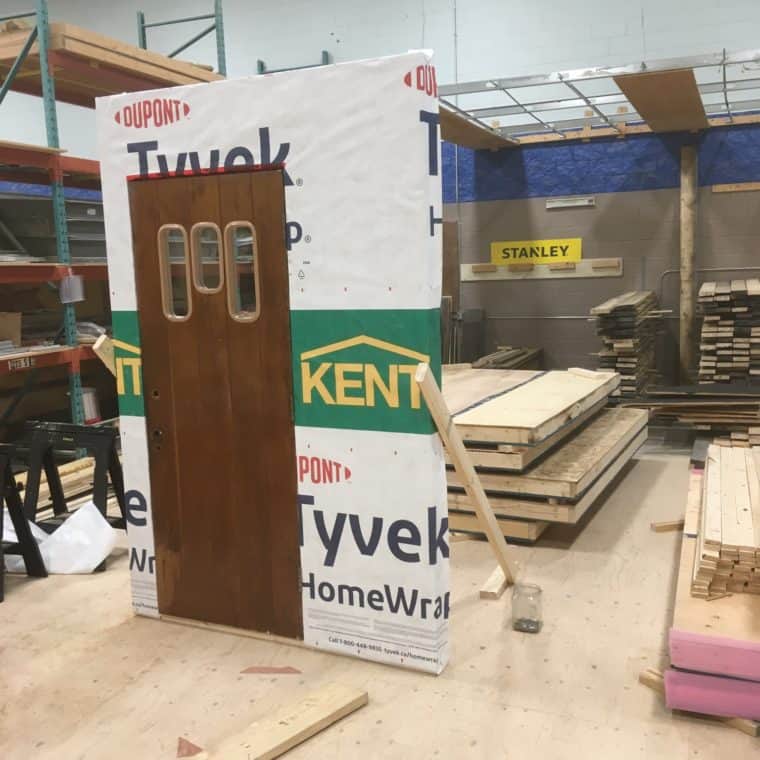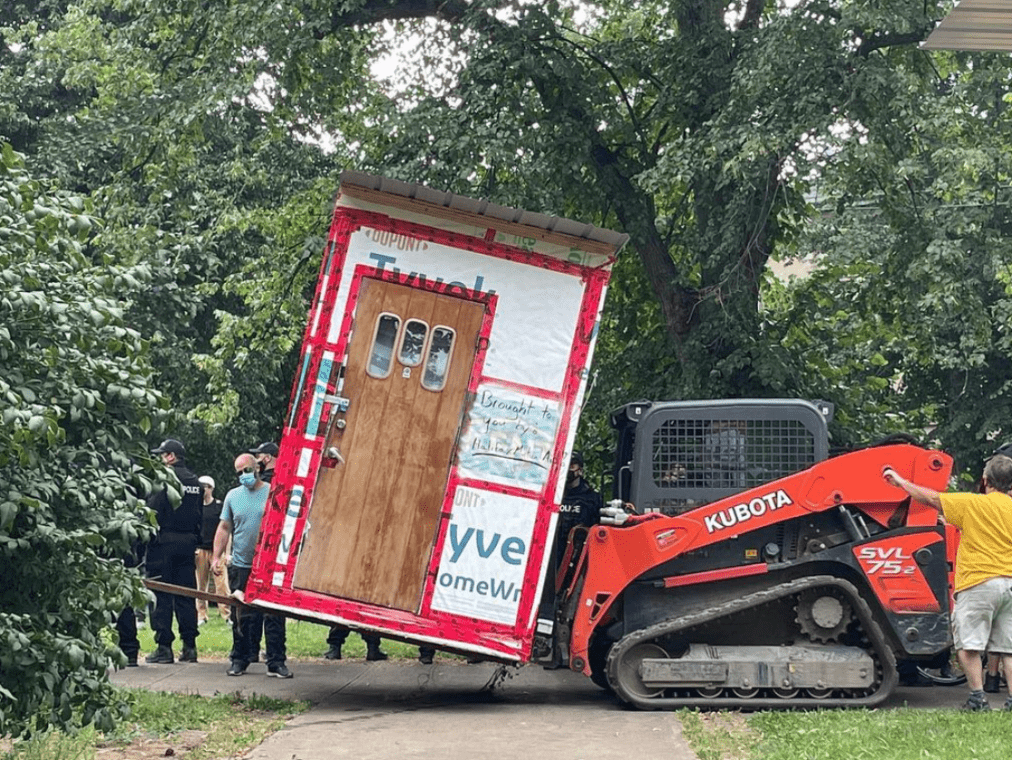Grassroots organizations are an integral part of the non-profit sector, responding to needs and shaping how communities care for each other. This profile, the first in a series, looks at how a group of Haligonians, recognizing that vulnerable people had nowhere to go during the pandemic and that government and non-profit organizations weren’t acting quickly enough, came together to fill a pressing need.
Like many grassroots groups that formed during the pandemic, Halifax Mutual Aid (HMA) emerged to fill a gap it saw widening in the community. As then Nova Scotia Premier Stephen McNeil told residents to “stay the blazes home,” nearly 500 people in Halifax were homeless and shelters were at capacity.
Inspired by Khaleel Seivwright, a carpenter in Toronto who started building small temporary shelters for people living in downtown parks and public spaces, a group of Haligonians came together to do something similar in their city.
“Vulnerable people had nowhere to go,” says Campbell McClintock, a spokesperson for HMA. “There was a recognition that this was an issue and the government was not acting quickly enough.”
People told us the shelters created a greater sense of safety and autonomy and the ability to manage quite unlivable conditions.
Campbell McClintock, HMA
In fall of 2020, a small group of volunteers, many of whom were already involved in housing and anti-racism activism, started laying the groundwork for HMA. The group’s outreach committee connected with people living in parks and other public areas, while other members sourced building materials and worked on their social media messaging. In January 2021, HMA built its first shelters.

“People told us the shelters created a greater sense of safety and autonomy and the ability to manage quite unlivable conditions,” says McClintock. “We feel that people deserve a lot better than these shelters, but it was within our capacity to build this small thing that creates a bit more safety for vulnerable people.”
The group has built around 25 shelters so far, but many were removed and destroyed last summer by the Halifax Regional Municipality, since the structures violate a bylaw against creating accommodation on municipal land. In August 2021, HMA helped organize a protest against the clearings, leading Halifax police to pepper-spray and arrest 24 protesters as city officials removed dozens of tents and shelters.
HMA is still building shelters, but McClintock says that after the encampment clearings, it’s been more challenging to find suitable locations. “We always just let the occupants lead us on that. It’s up to them where they want to be and where they feel safe,” he says.

The group understands that burnout is a massive problem in the non-profit sector and grassroots organizing, so HMA maintains a narrow focus: build shelters and raise awareness about the housing crisis in Halifax. That’s also a reason why HMA hasn’t teamed up with other more established non-profits or housing providers. “We want to be realistic about what we’re able to provide and just do that as well as we can,” says McClintock. “Hopefully, with a whole ecosystem of these different organizations, we can help meet everybody’s needs.” He adds that because of the illegal nature of the shelters, more established organizations might even feel uncomfortable supporting HMA’s work.
Jeff Karabanow, professor and associate director of Dalhousie University’s School of Social Work, says it’s integral that a range of organizations with varying philosophies, barrier levels (including shelters that allow pets, for instance, or clients who use drugs or alcohol), and service models exist within the non-profit sector.
We feel that people deserve a lot better than these shelters, but it was within our capacity to build this small thing that creates a bit more safety for vulnerable people.
Campbell McClintock
“In Halifax, we have new initiatives emerging: modular housing, a redesign of a motel that will house 65 folks, groups that have purchased buildings to provide supportive housing structures,” says Karabanow, who was a volunteer with Out of the Cold Community Association in Halifax for 15 years.
“So you would hope that we wouldn’t need HMA-type initiatives, but I think there will always be a role for that type of grassroots work. It’s important we maintain a breadth of structures so people who use them are allowed to have different styles of service delivery.”
The work of HMA has inspired other groups to address the homelessness crisis in similar ways. In December, the Archdiocese of Halifax-Yarmouth launched the Emergency Shelters project, in which they built 20 tiny shelters across 12 locations on their own land. The shelters have steel siding, built-in beds, heaters, smoke detectors, and USB charging ports.
And last fall, Halifax council announced it was building modular shelter units in Halifax and Dartmouth.
You would hope that we wouldn’t need HMA-type initiatives, but I think there will always be a role for that type of grassroots work.
Jeff Karabanow, Dalhousie School of Social Work
HMA’s advocacy has also brought greater attention to Halifax’s housing crisis and helped increase public support for homeless people in the city.
“I think it’s great if anything Halifax Mutual Aid does can motivate and mobilize other organizations and levels of government,” says McClintock. “It’s been empowering for the group to recognize the power we hold as community members. It’s a power we can leverage against more powerful institutions that should be extending their resources to the fullest.”


